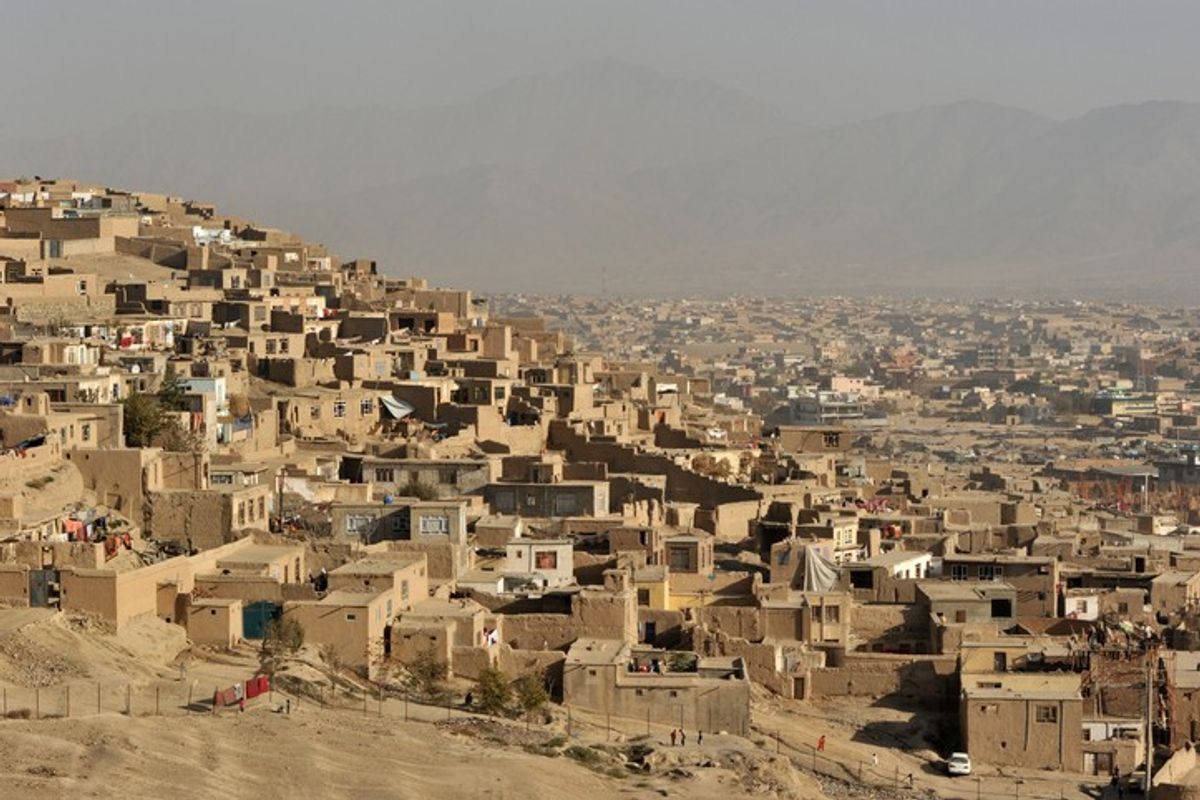President Donald Trump signed a revised executive order on Monday, temporarily halting entry into the country for people without valid visas from six predominantly Muslim countries and suspending the United States’ refugee program.
This is a somewhat narrower version of the travel ban the President signed just a week after his inauguration, sparking protests and confusion before it was later blocked by a federal appeals court. Under Monday’s revised order, people from six countries — Iran, Libya, Somalia, Sudan, Syria, and Yemen — who do not have valid visas or green cards will be banned from entering the U.S. for 90 days.
The revised order removes Iraq from the list of banned countries and no longer affects legal permanent residents from the named countries. It also provides new exceptions for dual nationals who use a passport from another country, people who were granted refugee or asylum status before the effective day of the order, and individuals traveling on diplomatic visas.
The order also suspends the U.S. refugee program for 120 days. Once resumed, the U.S. will accept just 50,000 total refugees in the fiscal year. That’s a significant drop from the 110,000 cap the Obama administration established.
The new order, signed by Trump without any media present, goes into effect on March 16. While the ban was re-tooled and narrowed in an effort to address the court challenges against the original version, it will continue to face legal scrutiny. And experts still question the national security justification the administration has claimed is behind Trump’s order.
The Trump administration has “sought to sidestep some of the earlier problems,” former Acting Director of the CIA John McLaughlin said, by dropping Iraq from the list and permitting those with multiple passports to choose their entry document. The focus on specific countries, however, “still distorts the issue and will probably not make a notable positive difference in combating terrorism within the U.S.,” he said.
“Careful vetting of all applicants, regardless of country of origin is still the best approach — and actually the most restrictive approach — as opposed to a list of prohibited countries. We'll have to see if Washington state or any others choose to challenge the legality of the new order,” McLaughlin wrote in an email to The Cipher Brief.
Taking Iraq off the list was ultimately a political and policy-based decision, rather than due to any specific legal problem, but it was “correct” and “very important” to exempt Iraq, according to James Jeffrey, the former U.S. ambassador to Iraq and Turkey.
Iraq’s original inclusion was a particular point of contention for many in the national security sphere, given the country’s status as a critical ally in the fight against ISIS. After the initial order was announced, retired four-star general and former Vice Chief of Army Staff Jack Keane told The Cipher Brief that he had concerns about Iraq being listed because “they are our ally, we have shed American blood in Iraq fighting side by side with the Iraqis against radical Islamists, and we’re fighting there right now as we speak.”
The new order boils down largely to cutting the annual intake of refugees and implementing a 90-day cessation of visa issuance “to nationals of six very problematic states (but a waiver is possible in individual cases) while vetting procedures are reviewed,” Jeffrey wrote in an email.
“One can question the policy wisdom of such acts, but with Iraq off the list and all the drama gone, this is only a minor tweak to policy clearly within the president's authority to conduct foreign affairs, control borders, and protect America,” he said.
However, Jeffrey added that by restricting the EO in this way, the Trump administration “is implicitly admitting the courts were right, which calls into question the status — and sense — of the Administration's appeal of court decisions.”
As in the original measure, the entire refugee admissions program is suspended for four months. All refugees from Syria, however, are no longer indefinitely blocked as in Trump’s first attempt.
And the revised version has dropped language from Trump’s first order that would have prioritized refugee claims “on the basis of religious-based persecution, provided that the religion of the individual is a minority religion in the individual’s country of nationality,” an apparent effort to allow Christians to come into the country from Muslim-majority countries.
The U.S. currently has an extremely stringent vetting process for refugees, and people attempting to enter the country under that status must register with the United Nations and undergo an interview and status approval from the U.N. prior to referral to the U.S. If the person is referred to the U.S., they are screened by several different agencies, undergo background checks, are fingerprinted, and individually interviewed over a period that typically takes 18 to 24 months. Refugees from Syria are also subject to additional required reviews.
Secretary of State Rex Tillerson called the order a “vital measure for strengthening our national security.”
“To our allies and partners around the world, please understand this order is part of our ongoing efforts to eliminate vulnerabilities that radical Islamist terrorists can and will exploit for destructive ends,” Tillerson said during Monday’s announcement.
And Secretary of Homeland Security John Kelly added, “We cannot risk the prospect of malevolent actors using our immigration system to take American lives.”
In the previous ban, Iraq was included in the “countries of particular concern” that were subject to the suspension. However, according to the new measure, “the close cooperative relationship between the United States and the democratically elected Iraqi government, the strong United States diplomatic presence in Iraq, the significant presence of United States forces in Iraq, and Iraq's commitment to combat ISIS justify different treatment for Iraq.”
The order also states that since the initial EO was released, the Iraqi government “has expressly undertaken steps,” which were not detailed, to increase their cooperation with the U.S. on travel and immigration.
Tillerson said that an “intense review” in the past month “identified multiple security measures” that the State Department and the Iraqi government will be implementing “to achieve our shared objective of preventing those with criminal or terroristic intent from reaching the United States.”
Attorney General Jeff Sessions, meanwhile, claimed that “the majority of people convicted in our courts for terrorism-related offenses since 9/11 came here from abroad.”
“We also know that many people seeking to support or commit terrorist acts will try to enter through our refugee program. In fact, today, more than 300 people, according to the FBI, who came here as refugees are under an FBI investigation today for potential terrorism-related activities,” he said.
William Braniff, the executive director of the University of Maryland’s National Consortium for the Study of Terrorism and Responses to Terrorism (START), said the revised order, like the initial EO, is not based on historical precedent, although there could be “some new threat on the horizon” that average citizens are unaware of that the President may have been briefed on.
“There is that unknown there, but based on historical data of recent threats to the United States, these are not countries that have generated a large number of potential plotters again the U.S. homeland,” Braniff said.
After the initial ban was signed, Brian Michael Jenkins, a senior adviser to the president of the nonprofit, nonpartisan RAND Corporation, told The Cipher Brief there have been 147 individuals involved in plotting or carrying out terrorist attacks in this country and 71 percent — or 104 people — were U.S. citizens. Another 20 were legal permanent residents, which means 124 people, or 84 percent, were long-term residents of the United States.
Eight of the total individuals were in the country on a temporary visa, according to Jenkins. Two individuals — one from Iraq and one from Somalia — were refugees. Information is unknown on three of the people arrested, Jenkins said, while 10 others entered from a variety of means, such as being smuggled into the country or entering by a green card via marriage.
And as a result of fatal jihadist-driven terrorist attacks since 9/11 — the 2002 Los Angeles International Airport shooting, the 2009 Little Rock shooting, the 2009 Fort Hood shooting, the 2013 Boston Marathon bombing, the 2015 Chattanooga and San Bernardino shootings, and the 2016 Orlando nightclub shooting — 89 people have been killed. The attackers in these cases were either U.S.-born citizens, a naturalized U.S. citizen from Kuwait, or individuals from Pakistan, Russia, and Egypt, countries not included under this or the original order.
During the presidential campaign, Trump advocated for a “total and complete shutdown of Muslims entering the United States.” In January, Trump supporter and former New York City Mayor Rudy Giuliani told Fox News that when Trump “first announced it, he said, 'Muslim ban.' He called me up. He said, 'Put a commission together. Show me the right way to do it legally.’”
“And what we did was, we focused on, instead of religion, danger, the areas of the world that create danger for us,” Giuliani said in the interview. “Which is a factual basis, not a religious basis. Perfectly legal, perfectly sensible, and that's what the ban is based on. It's not based on religion. It's based on places where there are [sic] substantial evidence that people are sending terrorists into our country.”
Faiza Patel, co-director of the Brennan Center’s Liberty and National Security Program, said in a statement that the new order “is still a Muslim ban and it is still unconstitutional.”
“The government is not allowed to favor one faith over another. Even though the new order does not obviously discriminate against Islam, courts will look at the purpose behind its provisions and President Trump has publicly and repeatedly proclaimed that he wants to ban Muslims from the United States,” Patel said.
With the revised version, “there’s a tacit acknowledgment that the implementation was not thought through” and was rushed in January, according to Braniff.
“There’s also a recognition that in the removal of Iraq from the list that other considerations — political, national security, and U.S. policy considerations — came into play here,” he said, noting that with that modification it seems the administration acknowledged it could not look at the threat of terrorism to the homeland “in a vacuum” and saw that alienating Iraq was counterproductive to its counterterrorism efforts.
“There’s a little bit of a story being told here about the administration figuring out what might have sounded good on the campaign trail gets very complex once you’re governing,” Braniff said.
Mackenzie Weinger is a national security reporter at The Cipher Brief. Follow her on Twitter @mweinger.













